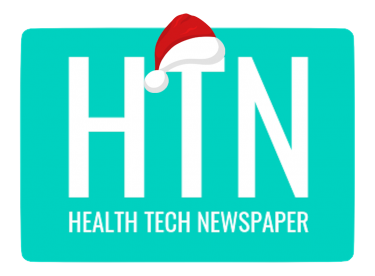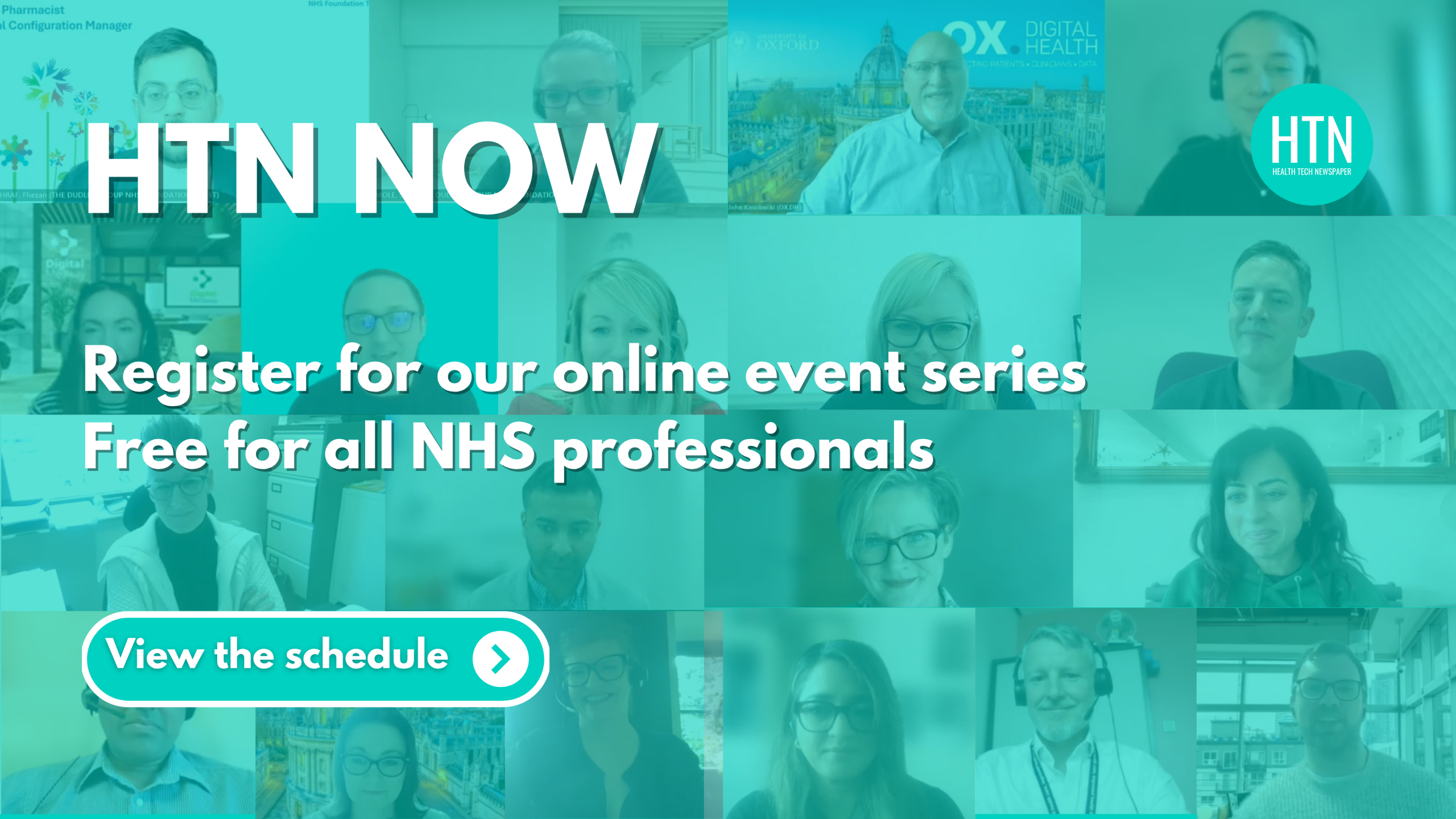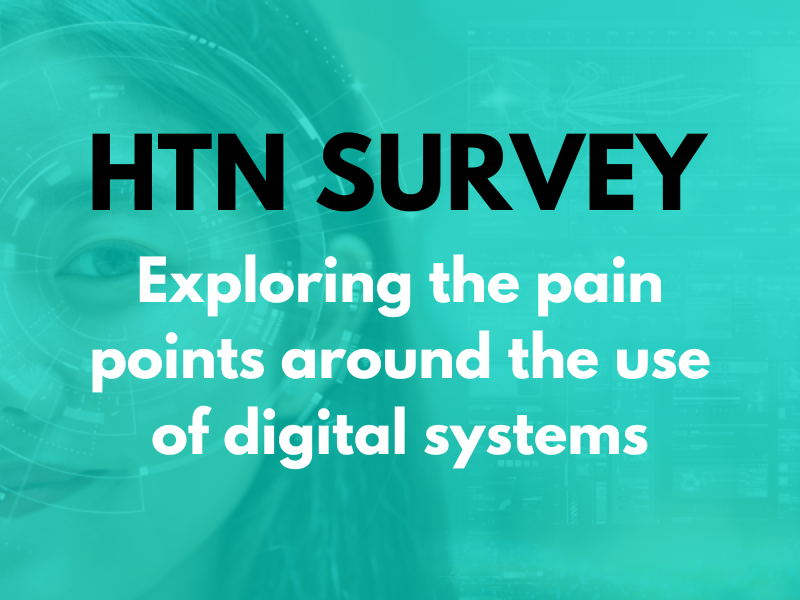HTN recently caught up with Harris Health Alliance’s Roddy McRae, Product Owner, and Katie Sutcliffe, Head of Marketing, to discuss their take on innovation in the NHS. Roddy and Katie shared insights and details of current and upcoming projects, including the ConneQt toolbar offering primary care a digital marketplace of NHS health tech providers who integrate via widgets with principal clinical systems, surfacing important child protection information (CP-IS), a prescription stock level tracker, and more, to clinicians at point of care.
Katie offered a brief introduction to Harris Health Alliance, created following a merger of different business units owned by parent organisation Harris Computer, who deliver “mission-critical” software solutions across a variety of verticals including healthcare. “Before the merger we were operating under three separate brands: K2 Medical Systems, providing digital maternity solutions, with their flagship product being a maternity-specific EPR,” she said. “Genial who offer quality and compliance management, and a genomic laboratory management system, and then there’s Quicksilva, who provide NHS integration and act as the middleman between third-party service providers and NHS data, as well as providing bespoke solutions, cloud hosting, and so on.”
Harris Computer recognised the potential that merging could offer, based on the similar spaces that the three businesses occupied, Katie went on. “We understood that by combining our forces, we could provide a really significant and unique opportunity within the health tech space, and since we merged in January 2024 we have been working internally to understand what we can do to best provide our services and expertise to the market.”
Roddy shared details of his role as Product Owner of the ConneQt toolbar, and the focus to roll out the toolbar across the whole of England’s primary care estate. “We’re currently doing a CP-IS widget pilot with Black Country ICB, which has been successful and we hope will help offer confidence for adoption nationally to other ICBs,” he stated.
The ConneQt toolbar
The ConneQt Toolbar is essentially a desktop widget that sits alongside EMIS, TPP, and so on, Katie explained. “It offers single sign-on functionality and can be easily moved around the desktop, and we have various different apps that can sit on it, including the Child Protection – Information Sharing app. It gives GPs simple single sign-on access, and it’s completely free for them to use. We’re also working with third-party service providers to make sure GPs have all the data they need to make the most informed decisions.
For a GP in an inpatient environment with a child or vulnerable person, who might be wanting to check whether there is a record for that patient, the toolbar presents the opportunity to do this without any difficulty, Katie said. “If they see that red dot, they instantly know how to respond, without having to flag it, without having to ask the question, or without even having to log on and check the data because that in itself creates a flag. The benefits of that are going to be immeasurable in terms of the impact it will have for GPs, children, and vulnerable adults, because they’re going to be getting that more informed and safer level of care.”
Roddy noted that future plans will include integration with Medicus and the OneAdvanced Vision clinical system in Scotland, adding: “The toolbar is also exciting because it gives a single point of integration into all those principal clinical systems, with the key benefit of hopefully bringing more innovative projects to the marketplace quicker.”
The platform also allows for documentation to be attached to the record, with plans to extend into medical record data, said Roddy. “We’re talking to a number of Shared Care Record providers at the moment, so that’s very exciting, but the challenge with a lot of these things is that there’s an awful lot of development work involved. We have people looking for all forms of data extracting, which is difficult, because the tech behind that needs modernising.”
At present, there are ten companies with integrations onto the toolbar, with a number of those already live, Roddy shared. “Once the toolbar is deployed, GP practices will be able to get immediate access to those different products, and we’ve got at least another ten in the pipeline.”
One example is the Boots prescription stock checker, Katie noted. “It sits in our toolbar, it’s free and means GPs can find out where the nearest prescription medicine is, how many miles away, and even the opening hours of that particular pharmacy. They can check to make sure the medicine is available and let the patient know where they need to go to pick it up.” That ability ultimately improves patient experience, she continued, as well as making life “much easier” for GPs.
“We hope to attract more partners to offer additional services through the toolbar,” Katie told us, “and it’s such a user-friendly tool that gives GPs all the access they need, giving them their time back to focus on patient care.” The toolbar is also the only NHS England and IM1-approved aggregator, fully NHS compliant, and delivered alongside the NHS, she added.
Future development and opportunities for innovation
The platform will continue to be developed and refined, with work underway with NHSE around the clinician request pain point. “Feedback from primary care for years has been that people don’t really care about the features, they just want it to run efficiently,” Roddy highlighted. “Often the things that are of most benefit to clinicians are actually quite ordinary.”
“That’s always been our tagline at Quicksilva (now of course under HHA) – making the complex simple – and we really do try to simplify everything for our customers, giving them simplistic solutions that offer real advantages,” Katie added. “When we talk about innovation in the NHS, that’s our way of showcasing it, through solutions that can bring about those important benefits of having secure and quick access to data that clinicians need. The innovation is giving them what they want in an easier format, empowering clinicians and frontline workers with everything they need to deliver the best and safest care to patients.”
At present, the toolbar has had just over 300 installations nationally, with the team working on deployment with over sixteen ICBs, according to Roddy. The key element is collaboration, he continued, “and it’s how we collaborate with our partners and competitors, sometimes, because I’d like to see us cooperate on the technical stuff, agreeing on certain standards rather than ten different companies doing things ten different ways”.
Roddy cited challenges including communication and duplication, with integration partners having to complete the same forms multiple times when working with different organisations, and a lack of coordination which can often “significantly slow things down”. This is a common issue, he went on, “but it’s something I wish people would talk a bit more about, to see how we could improve it”.
Looking ahead, the most exciting thing on the horizon is increased collaboration, Katie considered, “and I think we’re seeing more and more of what people really want – working together to provide that united care, working under the same guise, because we ultimately all have the same goal; patient safety”. HHA has great levels of expertise across the board, and sharing that is a great opportunity, she said. “Let’s do what we can to work together. The 10 Year Plan mentioned making the UK the leading healthcare system in the world, and if we want to get there, we need to work together more and share these technologies and insights we all have.”
“The technology has great potential, but what I see being forgotten is that it’s still fundamentally people that implement it,” Roddy shared. “My excitement is really not exciting – it’s about replacing tech, reducing technical debt, and the key thing is how we can replace these obsolete systems quickly to improve user experience, save time and money to do better things.”
To learn more about the ConneQt platform, please click here.





